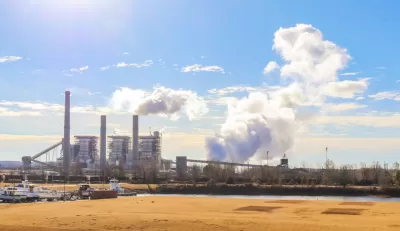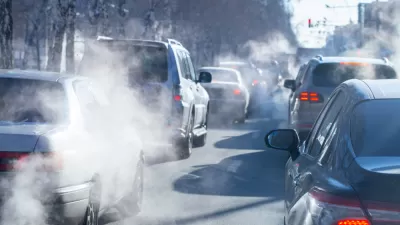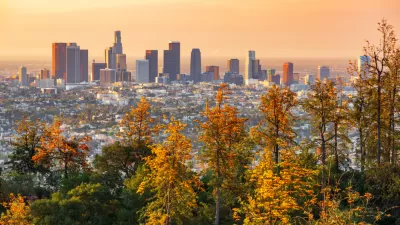New research shows that the voluntary emissions measurements conducted by many cities vastly undercount their greenhouse gas production.

A new study published in Nature Communications claims that cities undercount their greenhouse gas emissions by, on average, close to 20%. If this figure holds across the country, writes John Schwartz in the New York Times, the missed emissions would account for more emissions than the entire state of California produces.
As cities continue to grow and climate change poses increasingly urgent threats, leaders around the world have set emissions-reduction goals, "but there is not yet a consistent way for them to measure the amount of carbon dioxide or to gauge any reduction." As such, the voluntary efforts being undertaken by cities are "inconsistent and flawed." Based on the research team's estimates, the city of Cleveland underreported their emissions by a whopping 90%. Palo Alto, on the other hand, reported emissions 42% higher than the team's estimates, showing a wide range of inaccurate reporting that both under- and over-estimate emissions.
The errors seem to come from "simple miscalculations," but the study's results highlight the need for "a consistent way to state emissions that goes from the city level to the national level." To understand whether a city is moving closer to its climate goals, "accurate measurement is an essential element of knowing where they stand."
FULL STORY: U.S. Cities Are Vastly Undercounting Emissions, Researchers Find

Planetizen Federal Action Tracker
A weekly monitor of how Trump’s orders and actions are impacting planners and planning in America.

Chicago’s Ghost Rails
Just beneath the surface of the modern city lie the remnants of its expansive early 20th-century streetcar system.

San Antonio and Austin are Fusing Into one Massive Megaregion
The region spanning the two central Texas cities is growing fast, posing challenges for local infrastructure and water supplies.

Since Zion's Shuttles Went Electric “The Smog is Gone”
Visitors to Zion National Park can enjoy the canyon via the nation’s first fully electric park shuttle system.

Trump Distributing DOT Safety Funds at 1/10 Rate of Biden
Funds for Safe Streets and other transportation safety and equity programs are being held up by administrative reviews and conflicts with the Trump administration’s priorities.

German Cities Subsidize Taxis for Women Amid Wave of Violence
Free or low-cost taxi rides can help women navigate cities more safely, but critics say the programs don't address the root causes of violence against women.
Urban Design for Planners 1: Software Tools
This six-course series explores essential urban design concepts using open source software and equips planners with the tools they need to participate fully in the urban design process.
Planning for Universal Design
Learn the tools for implementing Universal Design in planning regulations.
planning NEXT
Appalachian Highlands Housing Partners
Mpact (founded as Rail~Volution)
City of Camden Redevelopment Agency
City of Astoria
City of Portland
City of Laramie





























